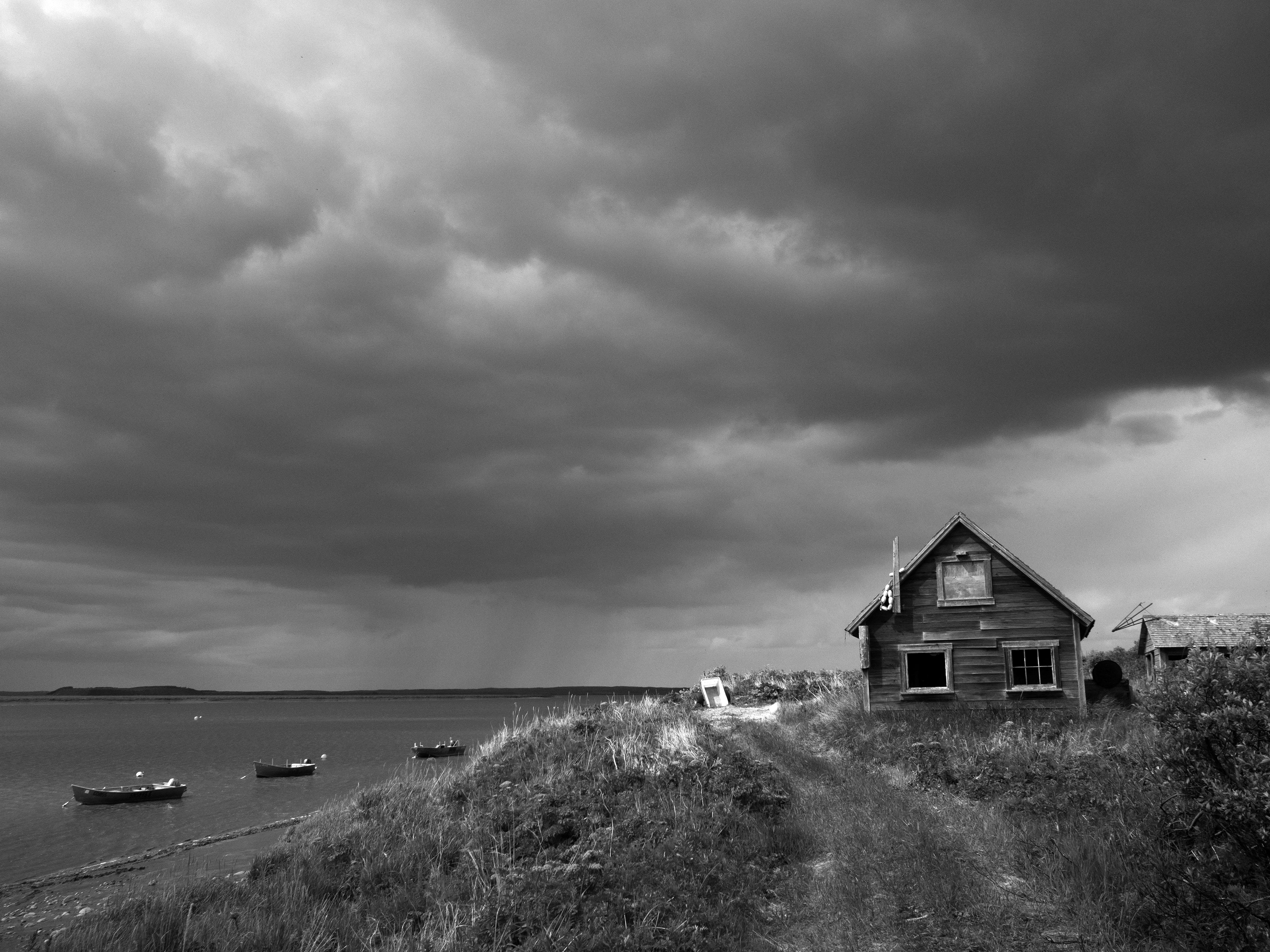
“Riley’s Cabin,” from John Hagen’s Ugashik series of photographs.

“Riley’s Cabin,” from John Hagen’s Ugashik series of photographs.
by Rosanne Pagano
Winter 2023-24, FORUM Magazine
FINE ARTS PHOTOGRAPHER John Hagen was maybe 10 or 11 when he entered his first contest, determined to take first prize with a picture of bald eagles that gather by the thousands every autumn north of Haines, the Southeast town where he grew up. He had a plastic point-and-shoot camera and encouragement from his father, the Inupiaq artist John G. Hagen, a master of Tlingit carving. The contest’s top prize: $100.
“The local gift shop did photo processing and it had this bald eagle competition,” Hagen recalled. The memory still makes him smile. His photo didn’t win—“I think they gave me a free roll of film”—but he went home with more than cash. A photographer whose classically composed landscape photos have been exhibited in Anchorage, Homer, and Santa Fe, N.M., Hagen’s early effort revealed what it means to make art. “It’s all about trying and experimenting,” he said. He still has that camera.
Hagen was in high school when he next tried photography. Arriving from Haines to take part in an Anchorage program for promising students in media, he watched as everyone was given a point-and-shoot camera, preloaded with black-and-white film. When it was his turn and no cameras were left, the instructor offered a fully manual, single-lens reflex model. He received a crash course: “Focus, match shutter speed and aperture, and here you go. It was five minutes.” From that roll, two pictures were in focus; they were enough. Later as a photojournalism student at the University of Alaska Fairbanks, assigned to cover sports for the campus newspaper, and then as a staff photographer from 2001 to 2007 with the Fairbanks Daily News-Miner, Hagen would go on to use his camera to tell stories to make people care.
“It’s all about being there, bearing witness to events that happen,” he said. “I might move around, but mostly what you see is what I saw.” Which is why that white rectangular element is untouched in the middle of his photo, “Riley’s Cabin,” from Hagen’s Ugashik series completed in 2020. The central element—a disused four-wheel trailer—was neither excised with his computer nor hauled off before Hagen took the picture in the first place. “It stands out so much,” he says. “I like that it asks, ‘What is that?’ ”
Now see the house in sunlight, the Bering Sea weather rolling in. Consider the waiting skiffs, the shoreland grass. Together and singly, every feature tells the story Hagen wants you to feel: Alaska is a tough place where the land doesn’t care about you. To collect as much information as possible, he typically shoots in color even if converting to black and white. “Riley’s Cabin” was made with a digital camera and a small wide-angle lens as Hagen stood about 100 feet away. His aunt says Riley is someone who used to live in Ugashik. More than that Hagen doesn’t know.
After earning his bachelor of fine arts degree in new media from the Institute of American Indian Arts in 2011, Hagen, whose heritage is Iñupiaq and Aleut, returned to Alaska with an understanding of ways that fine art photography draws on aspects of traditional Indigenous art, especially its interest in freeing artists to express sentiment. He has applied this insight to his work since 2021 as curator for Indigenous art and initiatives at the Anchorage Museum. “I learned at IAIA that I wasn’t the only person like me out there,” he said. “Things that I was feeling about my Indigenous self were something I could talk about and create art around.” ■
The Alaska Humanities Forum is a non-profit, non-partisan organization that designs and facilitates experiences to bridge distance and difference – programming that shares and preserves the stories of people and places across our vast state, and explores what it means to be Alaskan.
April 16, 2025 • Kameron Perez-Verdia
March 5, 2025 • Polly Carr
February 25, 2025 • Amanda Dale